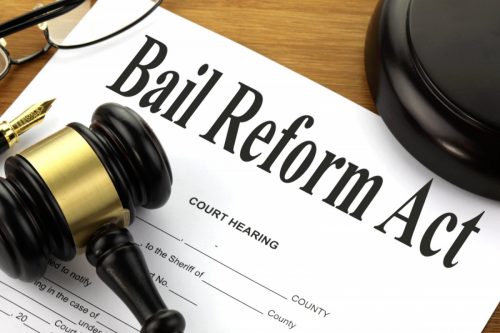

By Leslie Acevedo
ALBANY, NY – Rene Ropac and Michal Rempel published a report investigating New York’s bail reform law, and how it impacts – or not – recidivism,
Ropac and Rempel with support from Arnold Ventures, estimates the impact of the original bail reforms and the 2020 amendments on recidivism in New York City.
The report used non-public data, allowing [them] to track recidivism “beyond the immediate pretrial period and to ensure comparability of our bail reform and comparison samples across a wide range of criminal history, charge, and demographic measures,” the authors note.
The report sought to produce a credible “apples to apples” analysis of the association pretrial rates status and recidivism to correct for differences in baseline characteristics.
Ropac and Rempel reveal the original bail reforms led to a net reduction in recidivism in New York City, as “results indicate that eliminating bail for select misdemeanor and nonviolent felony charges significantly reduced recidivism.”
The report noted, “isolated cases made ineligible for bail under the original reforms and made eligible for bail again under the 2020 amendments (involving six percent of all cases for which bail was originally eliminated),” and results suggest bail reforms led to an increase in recidivism.
The report results suggest bail reform had distinct effects varying on people’s charges and criminal history.
“Both the mandatory release provisions and, to a lesser extent, provisions leading to the reduced use of bail in cases still eligible for it tended to reduce recidivism for people facing less serious charges and with limited or no recent criminal history, but tended to increase recidivism for people with more substantial recent criminal histories,” said Ropac and Rempel.
Primary analyses followed people’s re-arrest rates continuously throughout the follow-up person regardless of whether they were released or held in pretrial detention for any of it, as results indicated “more favorable to bail reform after isolating time in the community,” reported Ropac and Rempel.
The authors wrote, “Eliminating bail and pretrial detention for the majority of misdemeanors and nonviolent felonies reduced recidivism in New York City, reducing bail in the remaining cases still eligible for it yielded less consistent findings across two research designs.
“(Y)et because all effects were small or statistically non-significant, the findings indicate that releasing more bail eligible people did not affect recidivism in any direction, the 2020 amendments targeted a specific subgroup of people in a way that likely enhanced safety, and bail reform tended to reduce recidivism for people facing less serious charges and with limited or no recent criminal history, while tending to increase recidivism for people with substantial recent criminal histories.”
The report was the first in the Data Collaborative for Justice’s Bail Reform and Recidivism Series, said the writers, noting in 2024, the present study will be updated over a longer tracking period




